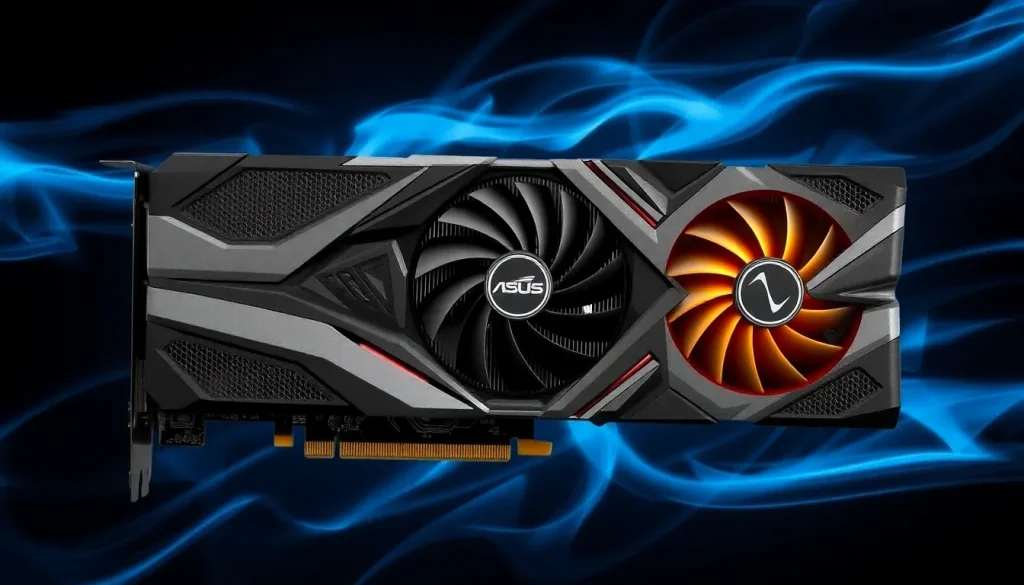ASUS unveils new connectorless graphics card concept with 250W PCIe power

Imagine a future where your powerful gaming rig is free from the clutter of cables, where a graphics card can draw all its power directly from the motherboard without the need for additional connectors. This is not just a dream anymore; it’s becoming a reality thanks to the innovative work of ASUS, which has recently unveiled a groundbreaking concept for a graphics processing unit (GPU) that operates without external connectors, along with a motherboard capable of supplying up to 250W through the PCIe slot.
The evolution of personal computers has been impressive over the past two decades, particularly in the realm of graphics cards. Once considered optional, these components have now become crucial for gaming, graphic design, and a variety of demanding applications. Traditionally, modern GPUs require multiple connectors and often a specialized power supply unit (PSU) to meet their energy needs. However, ASUS's new concept challenges this norm, promising a cable-free experience that could revolutionize PC building.
- Say goodbye to cables: ASUS introduces a connector-free GPU and a motherboard delivering 250W via PCIe
- ASUS successfully powers an RTX 5060 Ti consuming 248W without external connectors
- Understanding the ASUS BTF concept
- Exploring the ASUS BTF motherboard
- The significance of the ASUS TUF Gaming GT302 chassis
- What is the future of graphics connectors?
- Conclusion
Say goodbye to cables: ASUS introduces a connector-free GPU and a motherboard delivering 250W via PCIe
Every time a new generation of graphics cards is launched, manufacturers tout improvements in performance and efficiency. While these claims often hold true, they can also lead to increased power consumption. For instance, the latest models from NVIDIA, such as the RTX 4090, have been known to consume as much as 575W, necessitating robust power connectors that sometimes lead to issues like overheating or even component failure.
Typically, any graphics card that exceeds 75W requires additional power connectors. ASUS has taken a bold step by designing a GPU that operates without these extra cables, relying instead on a motherboard that can deliver up to 250W through its PCIe slot. This advancement is achieved through a unique PCIe slot that incorporates additional gold pins, enhancing the power delivery capabilities significantly.
ASUS successfully powers an RTX 5060 Ti consuming 248W without external connectors
In a recent demonstration, ASUS showcased a prototype motherboard featuring this innovative PCIe slot configuration. The prototype was able to connect effortlessly with a modified ASUS TUF GeForce RTX 5060 Ti Gaming graphics card, allowing it to draw a maximum of 248W without any external power connectors. This capability opens the door to supporting higher-end graphics cards, such as the RTX 5070 with a TDP of 250W or the RX 7700 XT at 245W.
The potential doesn't stop there; even demanding models like the RTX 5070 Ti or RX 7900 GRE could be connected without cables, provided that they operate under optimized power settings. This revolutionary approach could significantly simplify the setup process for gamers and PC builders alike.
ASUS's concept has generated excitement in the tech community, and video demonstrations, such as one on Bilibili, highlight the feasibility of this technology. The ability to power a high-performance GPU without the hassle of cables could redefine how we think about PC construction and energy consumption.
Understanding the ASUS BTF concept
The BTF (Back To Future) concept introduced by ASUS is not just about aesthetics; it fundamentally alters how power is managed in modern computing. This innovative design focuses on:
- Reducing the clutter of cables in PC builds.
- Improving airflow within computer cases by minimizing obstructions.
- Enhancing the overall aesthetic appeal of the build.
Exploring the ASUS BTF motherboard
The BTF motherboard is engineered to support the new connector-free graphics card technology, featuring:
- A PCIe slot with additional connector pins for enhanced power delivery.
- Support for future graphics card models that comply with this new standard.
- Advanced cooling solutions to handle the increased power consumption.
This motherboard aims to cater not just to gamers but also to content creators and professionals who rely on powerful graphics processing capabilities. The design also hints at compatibility with upcoming industry standards, making it a forward-thinking choice for enthusiasts.
The significance of the ASUS TUF Gaming GT302 chassis
Alongside the BTF motherboard, ASUS has also revealed the TUF Gaming GT302 chassis, designed to complement this innovative technology. This case integrates features that enhance cooling and can accommodate the unique layout of the BTF motherboard. Key aspects include:
- Optimized airflow to dissipate heat efficiently.
- Ample space for high-performance components.
- Support for modular design, providing flexibility for upgrades.
What is the future of graphics connectors?
The shift towards connector-free graphics cards could signal a major change in the PC hardware landscape. As technology continues to evolve, the industry may see a gradual phasing out of traditional power connectors in favor of more efficient solutions. This could lead to:
- Standardized power delivery through PCIe slots.
- Increased efficiency in power consumption.
- Greater innovation in graphics card design and capabilities.
The BTF concept could pave the way for a new era in personal computing, where clutter-free designs and enhanced performance go hand in hand. As ASUS continues to refine this technology, the PC building community will be watching closely for developments and potential product releases.
To see this technology in action, watch the demonstration from ASUS showcasing their innovative graphics cards and motherboard capabilities:
Conclusion
As the landscape of PC components evolves, ASUS stands at the forefront with its innovative approach to GPU and motherboard design. The promise of a future without cables not only enhances user experience but also opens new avenues for technology development. It will be fascinating to see how this concept shapes the future of gaming and computing.




Leave a Reply